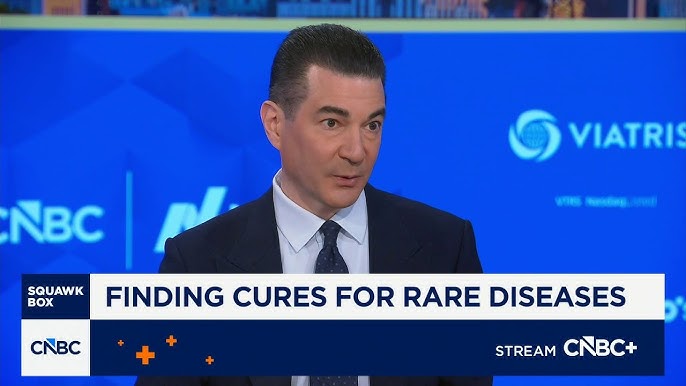
Dr. Scott Gottlieb on Finding Cures for Rare Diseases
Former FDA Commissioner Dr. Scott Gottlieb joins ‘Squawk Box’ to discuss the ongoing research and efforts at the FDA to find cures for rare diseases.…
Thought Leader: Scott Gottlieb

The ocean is home to all sorts of mysterious and terrifying things, but there’s one discovery in particular that should be used as a warning to pretty much every single human on Earth.
The disturbing find was made at one of the deepest parts of the ocean, known as the Mariana Trench. It’s the deepest spot on Earth, measuring some 11km (seven miles) down and sitting far below the surface of the water somewhere between Hawaii and the Philippines near the small island of Guam.
Given how deep the trench is, it wouldn’t be all that surprising to come across something unexpected. However, considering it’s in the ocean, you’d expect that discovery to involve some sort of sea creature, or weird plant.
Vescovo did admittedly come across a bit of that in the form of a previously unknown crustacean species, along with brightly colored outcrops and a pink snailfish, but he also found something that definitely shouldn’t have been there.
In a horrifying discovery, Vescovo managed to find lolly wrappers and, more specifically, a plastic shopping bag. Again, just to reiterate, this trash was found at the deepest spot on Earth.
Eric Galbraith, an ocean biochemist at the Catalan Institution for Research and Advanced Studies in Barcelona, commented on the disturbing find as he said: “We always had this sense that there was a part of the planet that was beyond, that was untouched by human action. That used to be true. And now it’s no longer true.”
A similar depressing find came when Dr. Deo Onda, a microbial oceanologist from the University of the Philippines Marine Science Institute, dove into the Emden Deep, part of the Philippines Trench.
“The Philippine Trench is already so deep, but human pollution was still able to reach it. What more for shallower environments like coral reefs and seagrass beds?” Onda told The Inquirer. “[If we don’t do anything], I wouldn’t be surprised if I would get confused if I was in the Philippine Trench or in Manila Bay.”
In 2018, researchers from the Institute of Deep Sea Science and Engineering in China determined that man-made plastics had ‘contaminated the most remote and deepest places on the planet’.
Dr. Scott Gottlieb on Finding Cures for Rare Diseases
Former FDA Commissioner Dr. Scott Gottlieb joins ‘Squawk Box’ to discuss the ongoing research and efforts at the FDA to find cures for rare diseases.…
Thought Leader: Scott Gottlieb
Peter Zeihan: U.S. Navy Seizes Russian Tanker
The US Navy just seized a shadow fleet tanker that managed to slip past the naval quarantine around Venezuela. The tanker reflagged as Russian while…
Thought Leader: Peter Zeihan
Erika Ayers Badan: Surviving Company Failure
In this episode of WORK: Unsolicited Advice, Erika talks through what it really looks like to come out of the worst month of your career…
Thought Leader: Erika Ayers Badan

